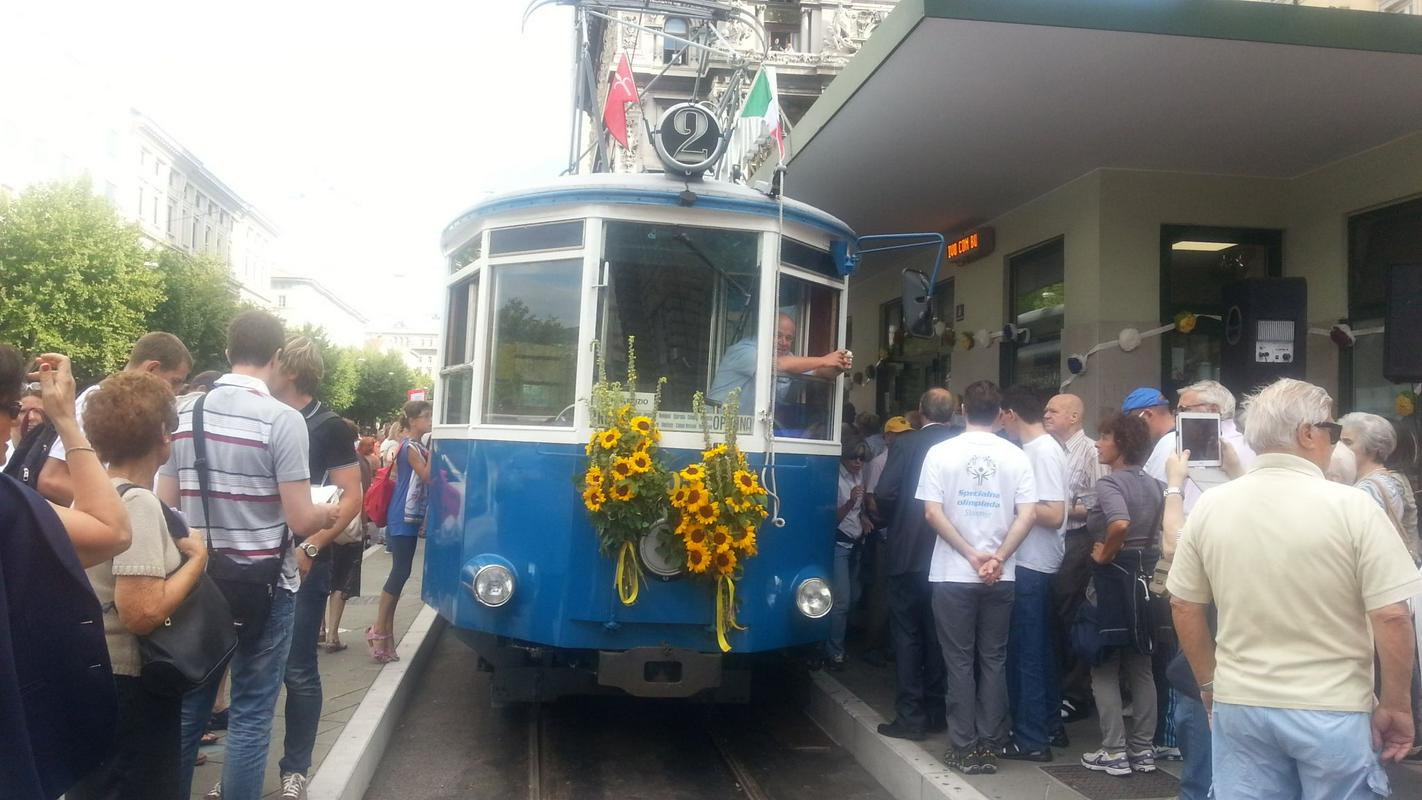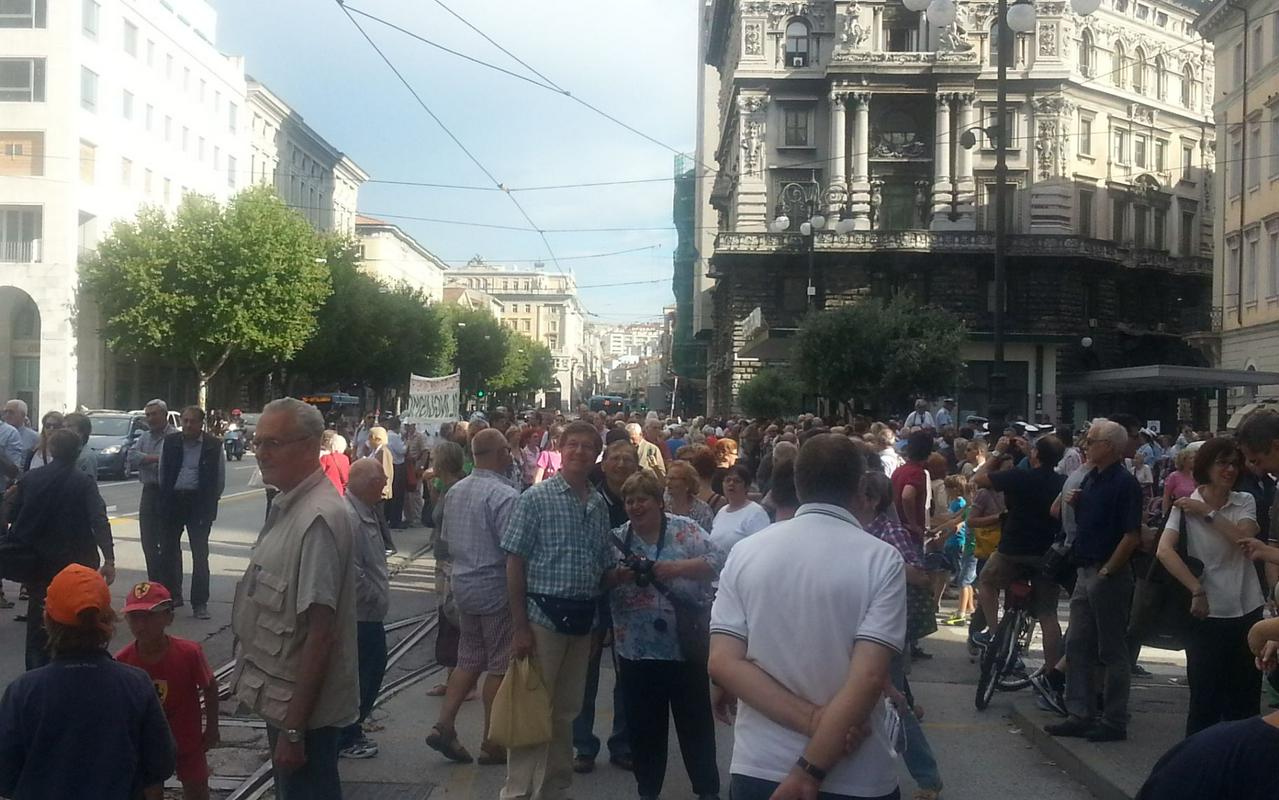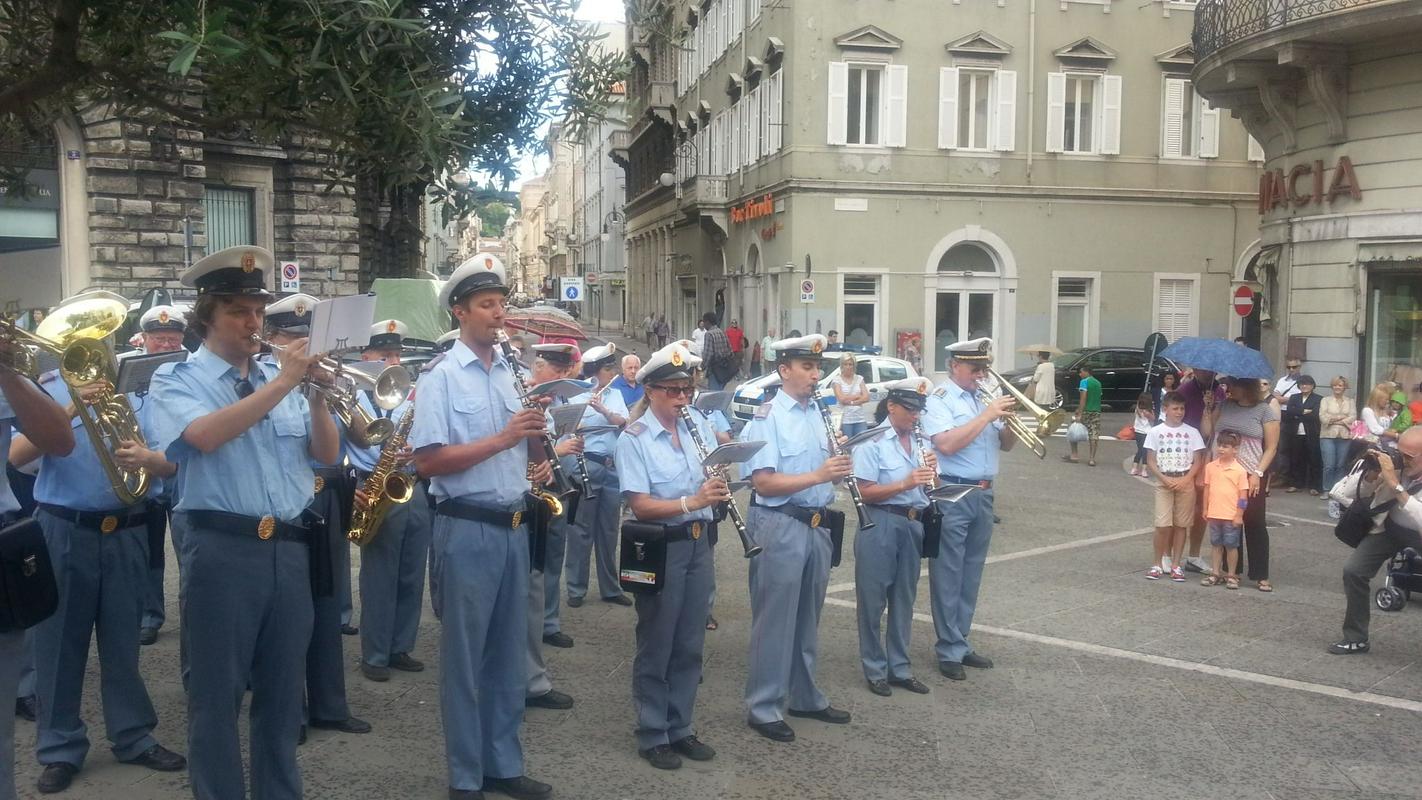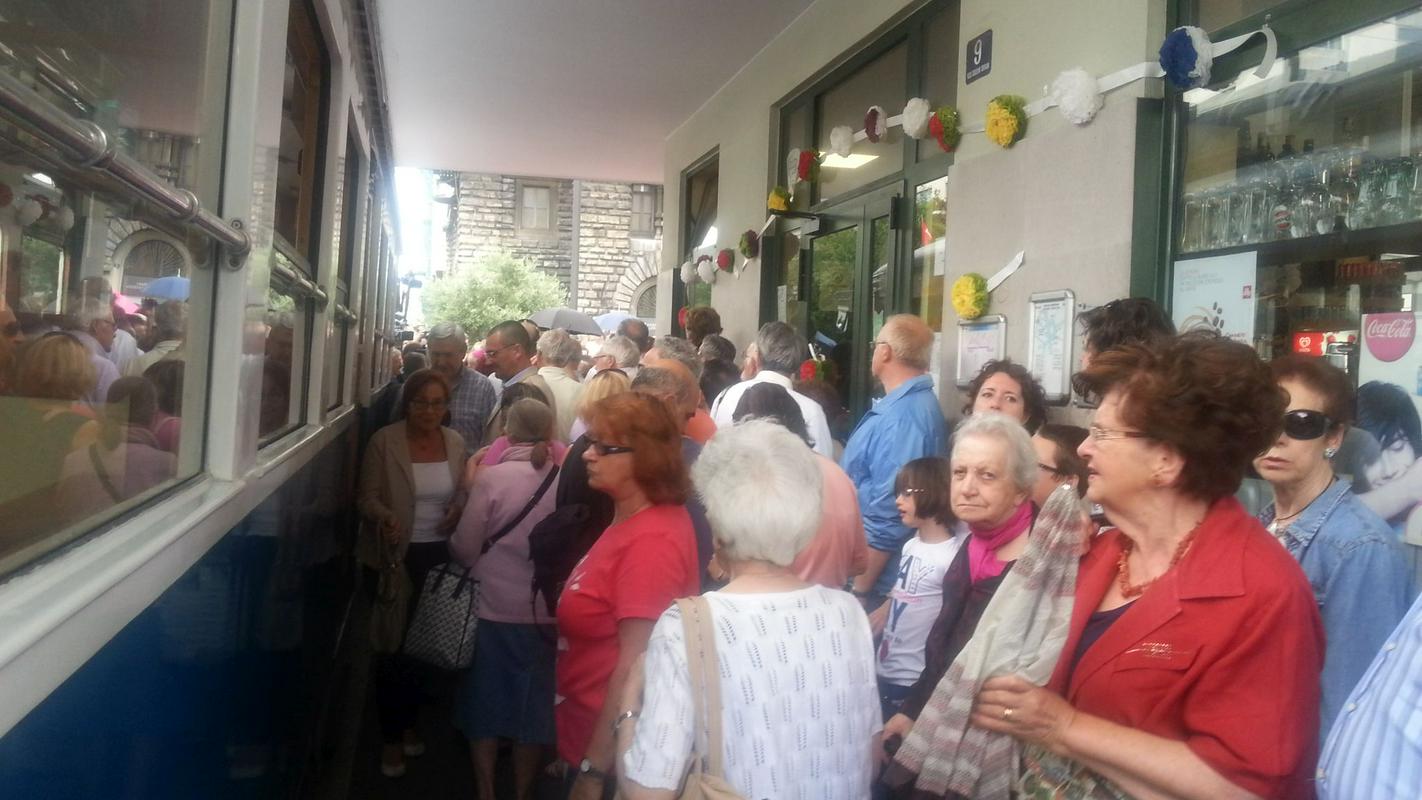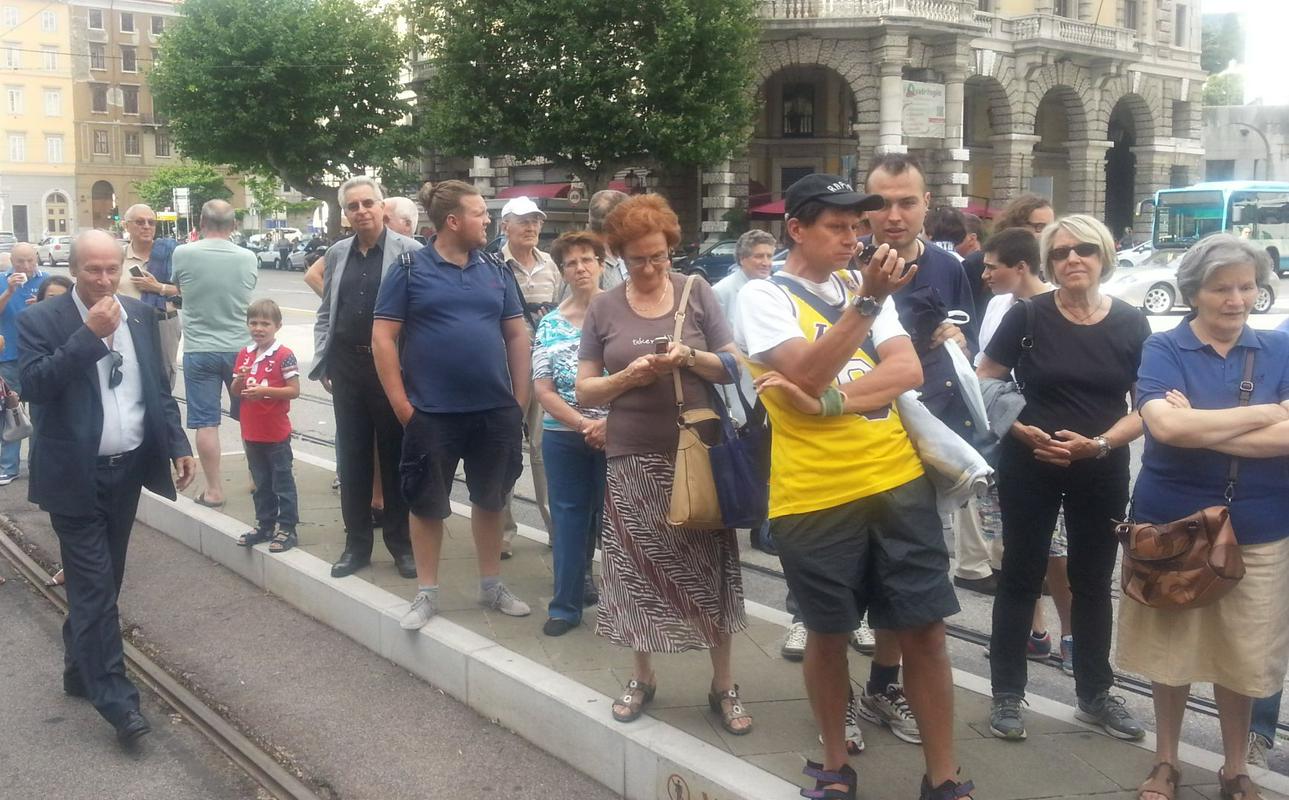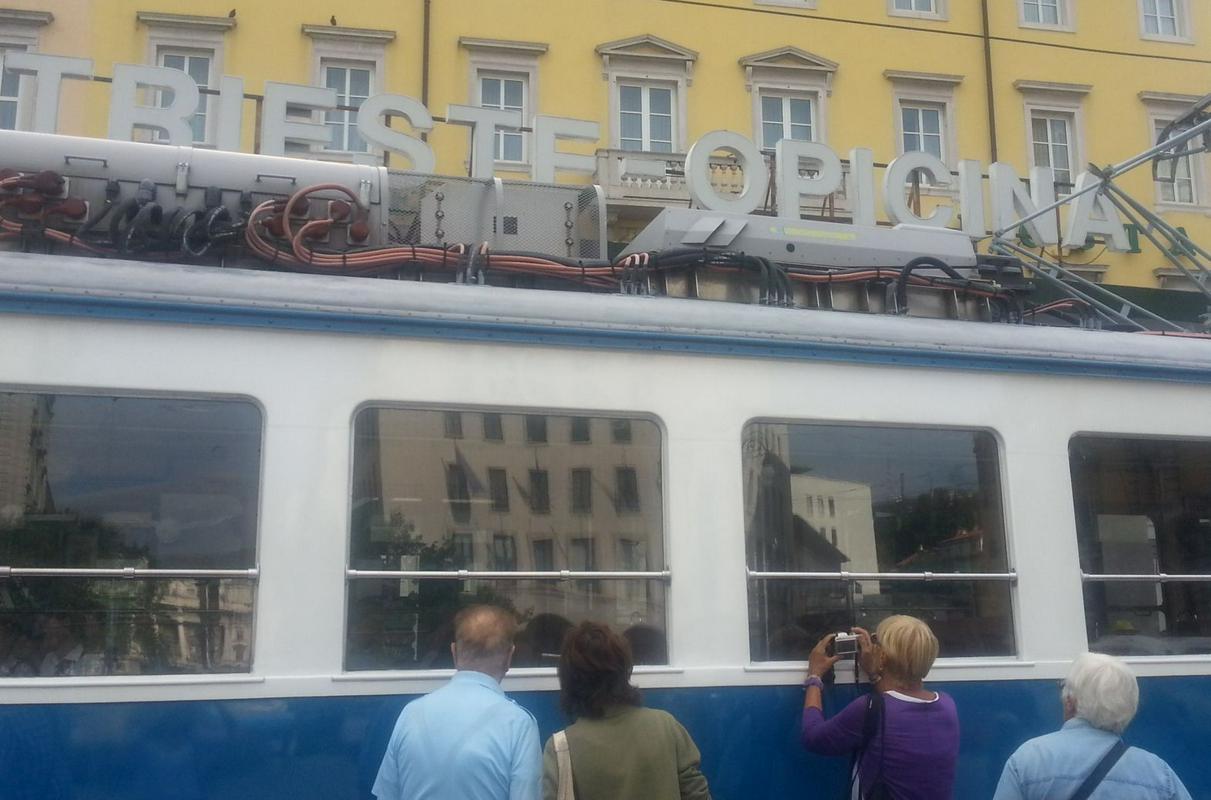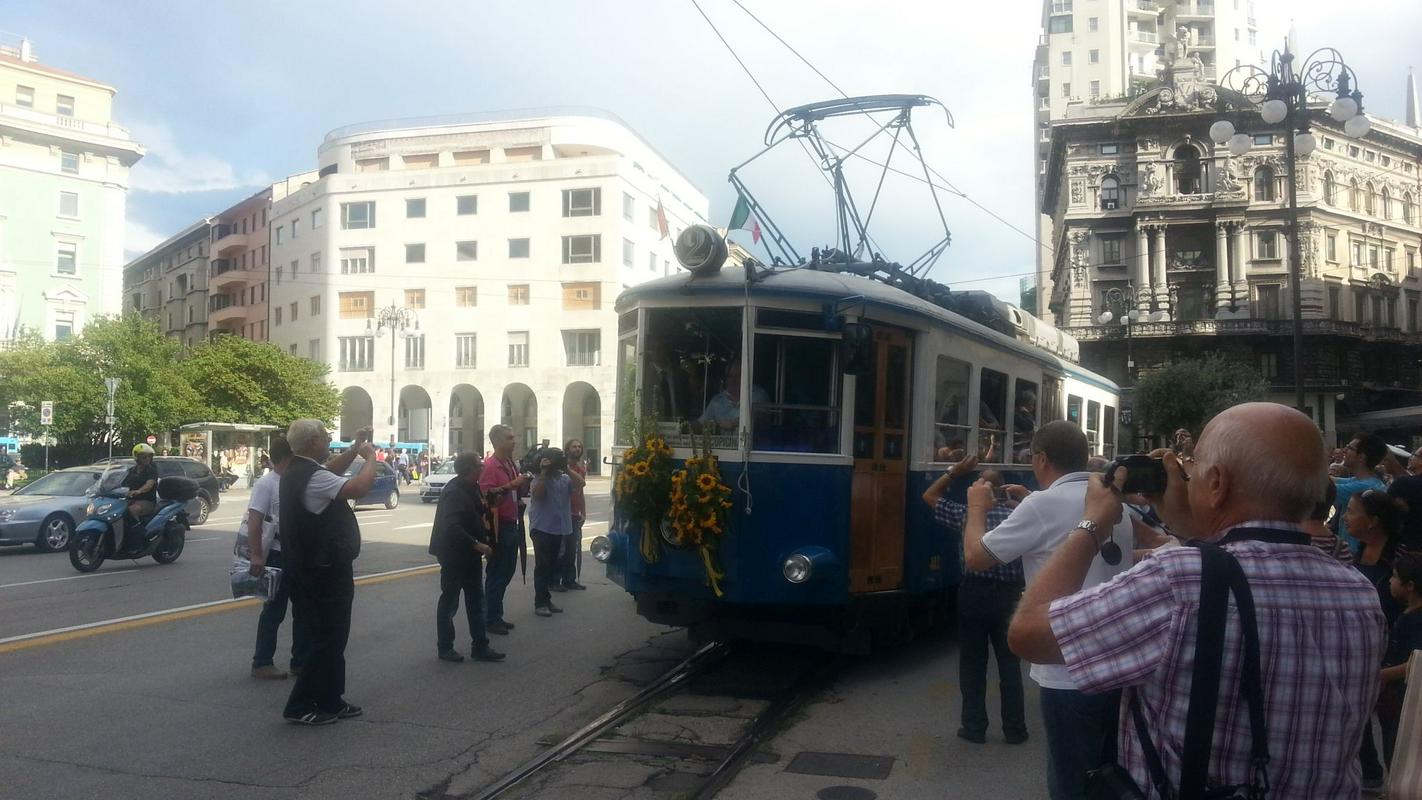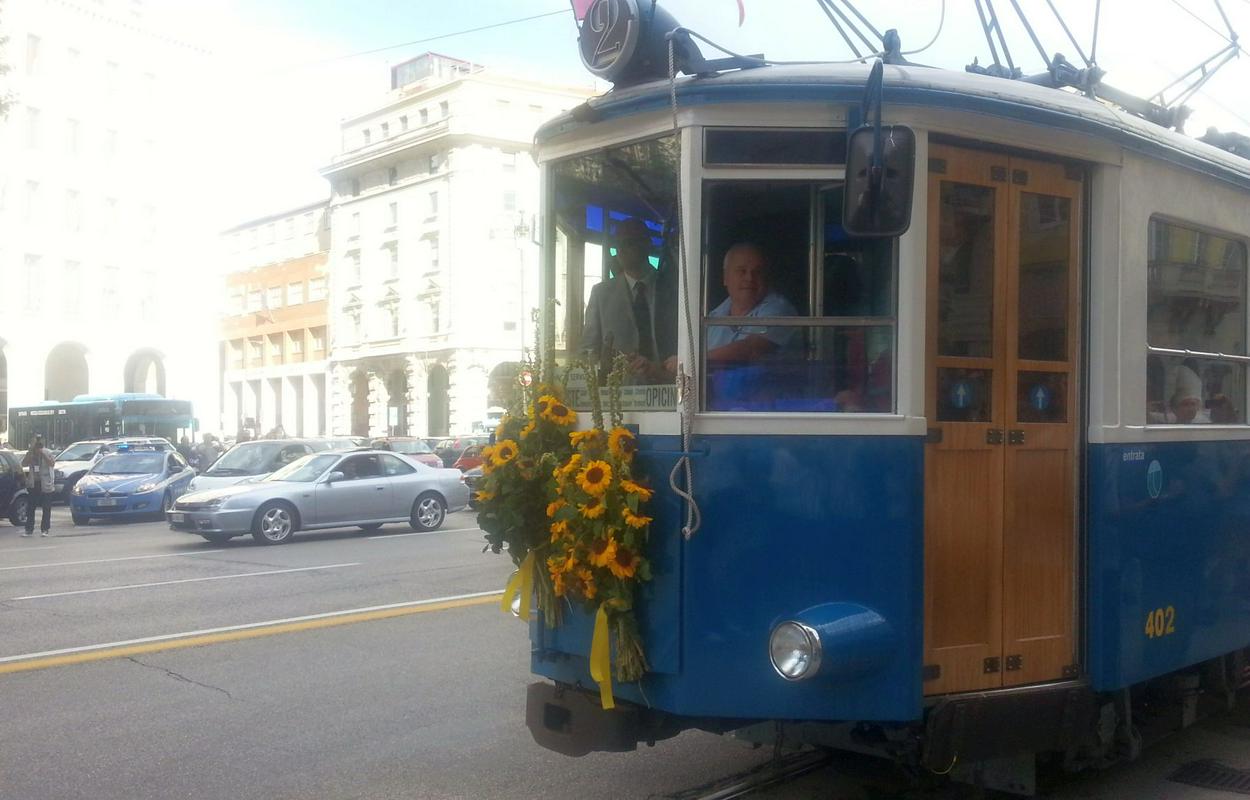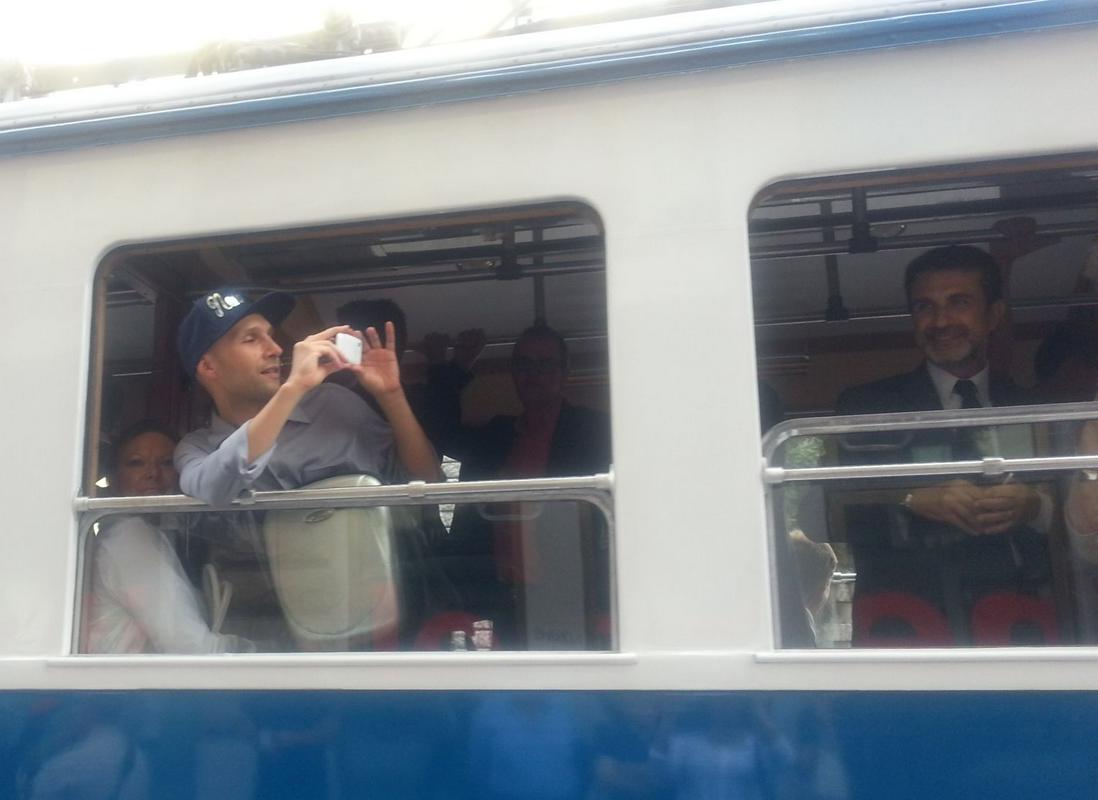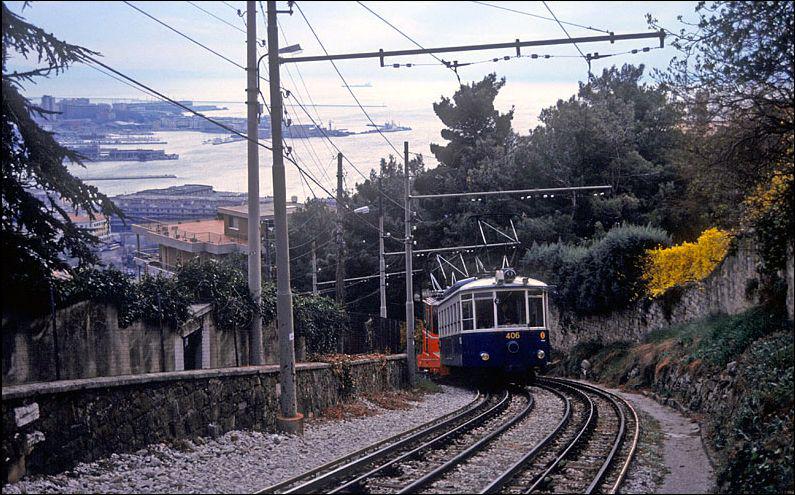

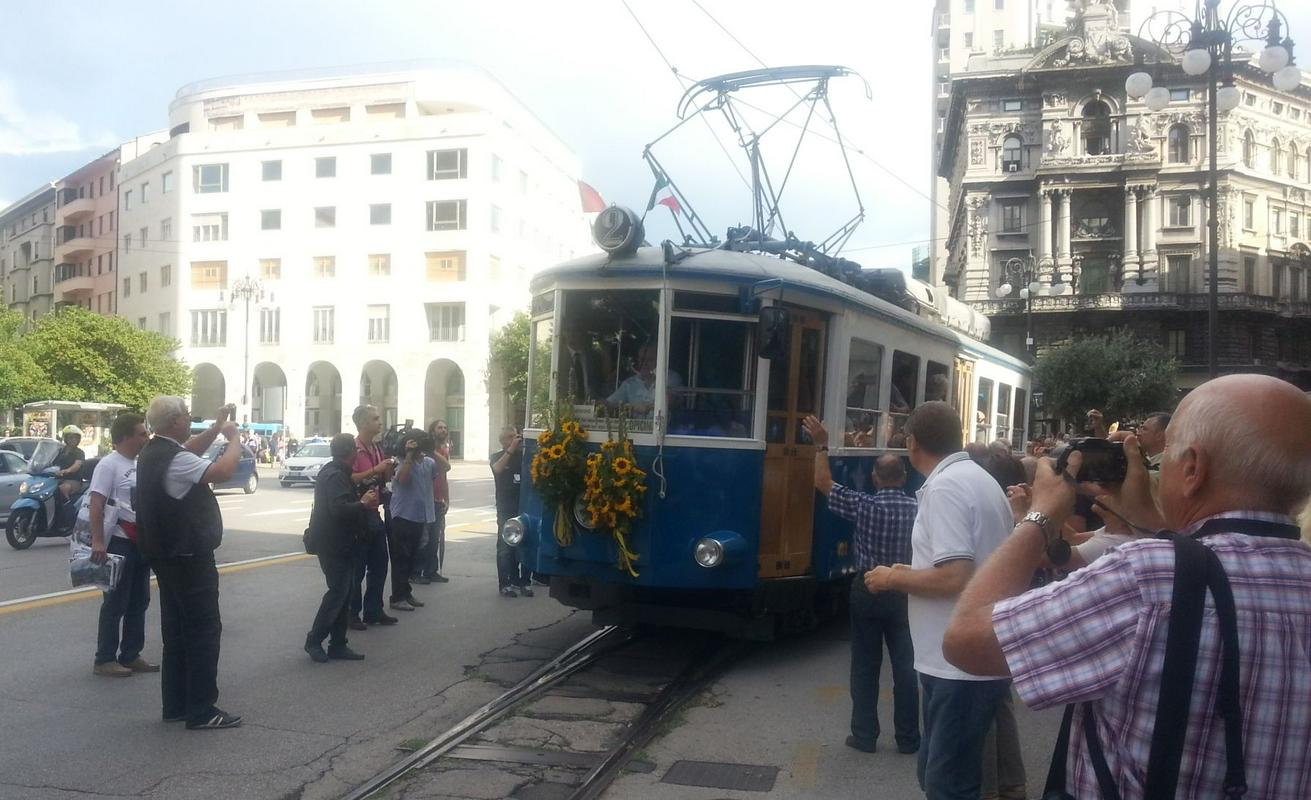
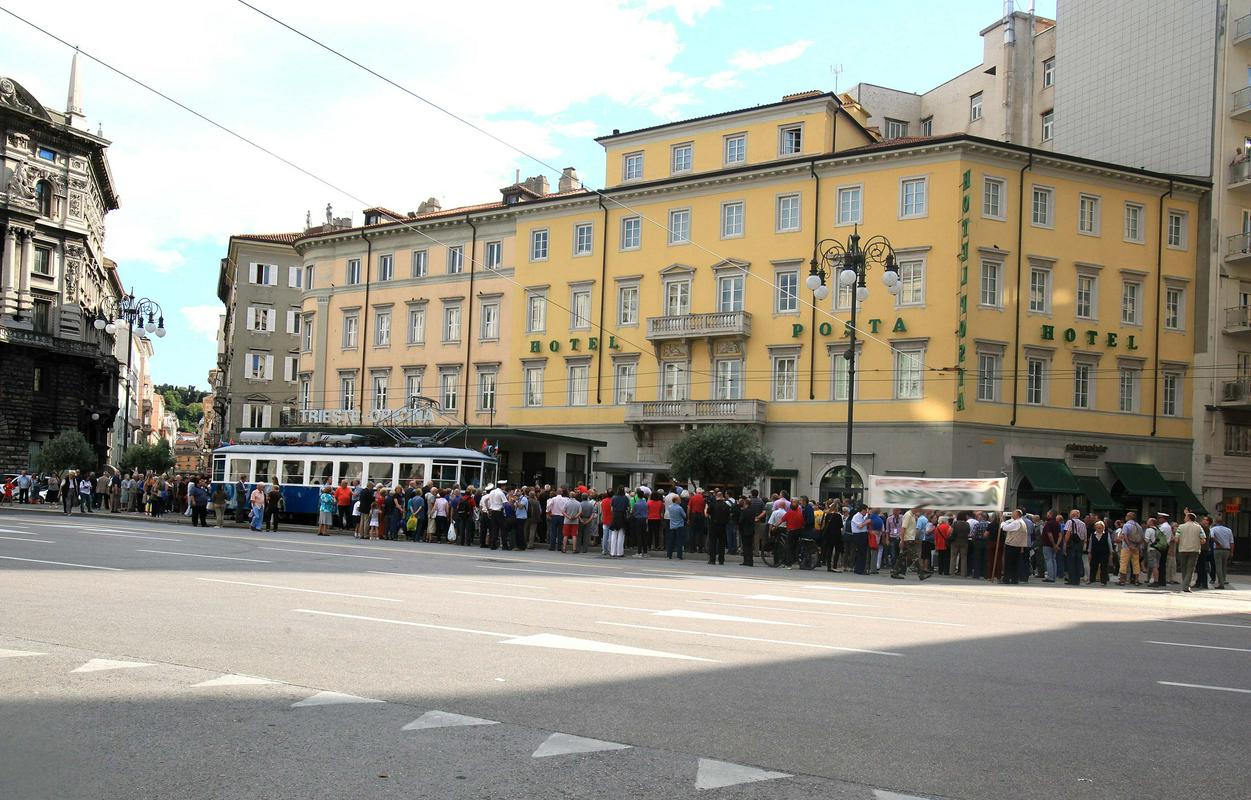
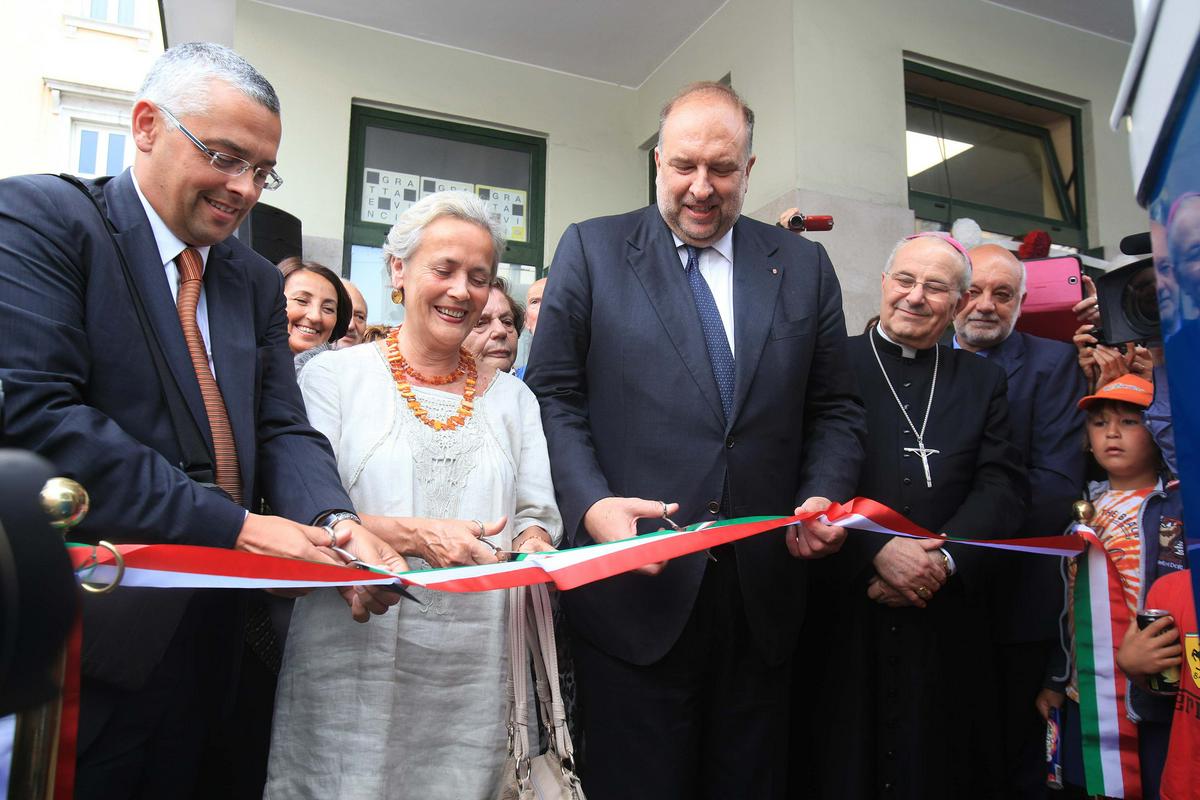
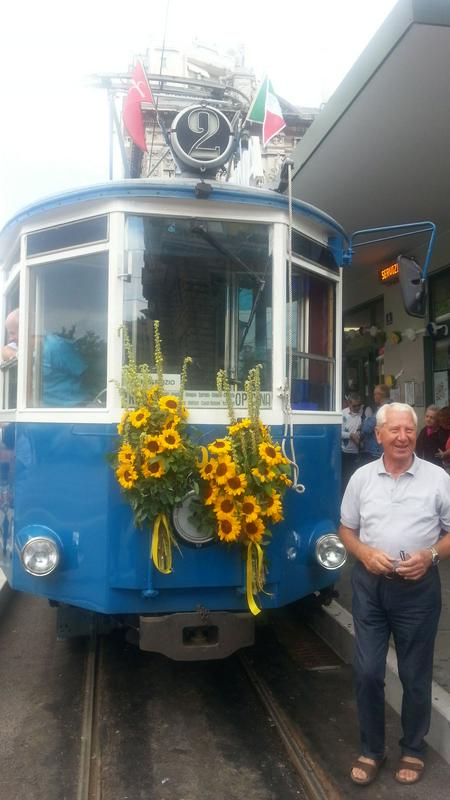
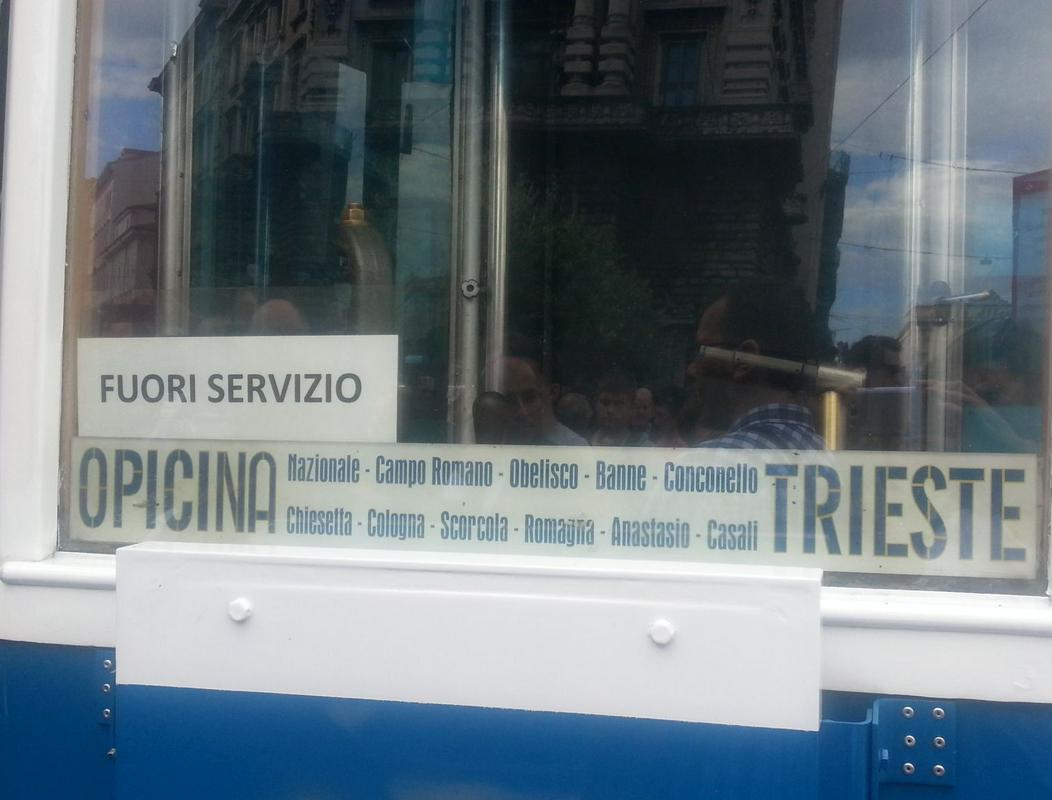
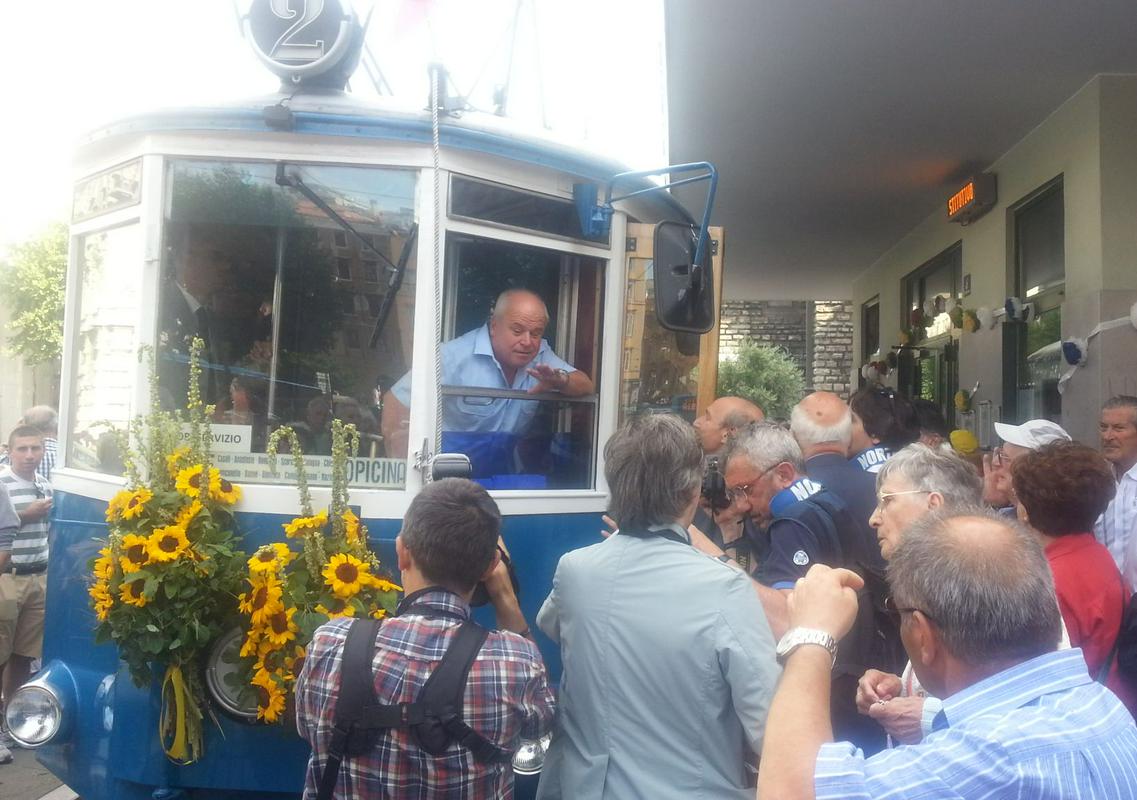
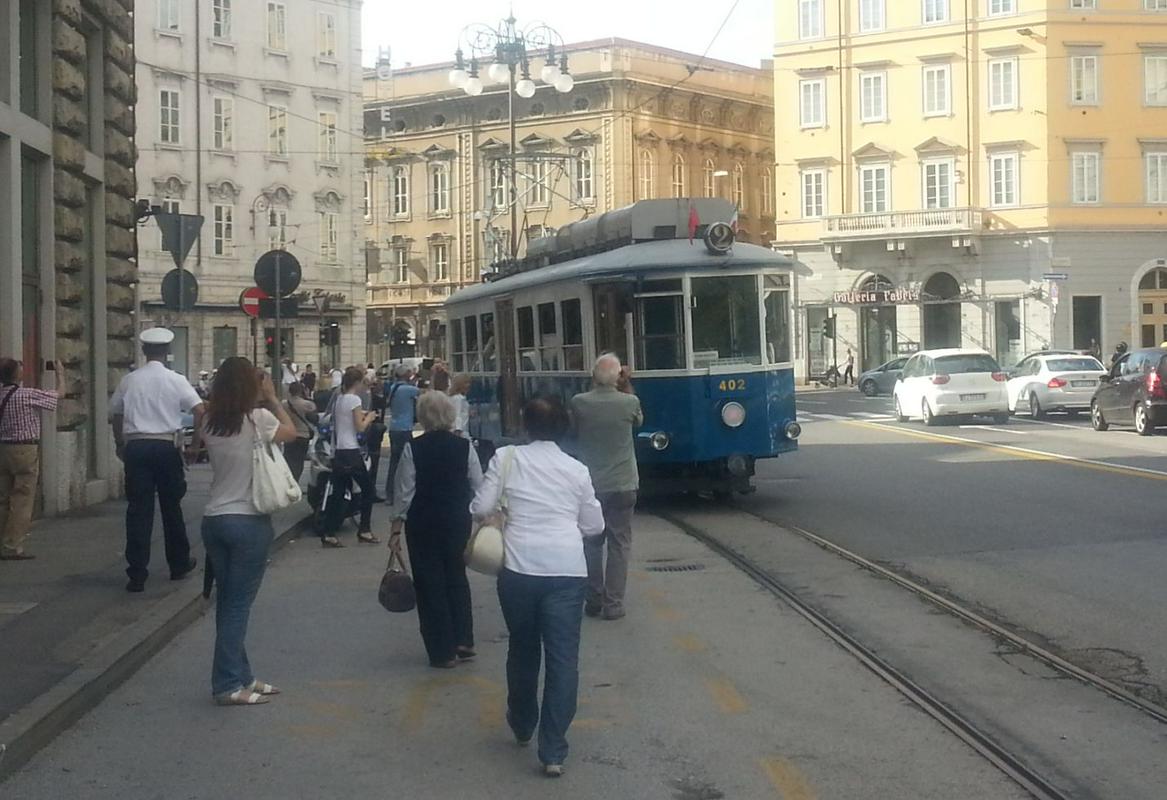
“It's wonderful, madonna, we are so contenti (satisfied), have you seen how many people came to see it off,” one of the spectators at the ceremony at Oberdan Square in Trieste was not able to hide her enthusiasm. She had taken the tram countless times while traveling to the Karst. “Let's hope this time everything will be all right, and that it will last ...”
The crowd of spectators gathered in Trieste, and at a number of stations including the final stop at Opicina, wishing good luck to the famous tramway. The faces of the visitors dressed in their best showed clearly the pride and happiness with the revival of one of the symbols of Trieste, which has been driving for more than 112 years.
In the beginning it was used by the more affluent citizens for their travels to the Karst, or to their villas at Opicina for vacations. Later it became an indispensable means of transport for everybody, from school children to workers. The tramway is of extraordinary historical, and transport importance for Trieste, while today it is mainly an important means of transport for tourists, offering a unique experience.
The ceremony started at 5.30 p.m., and some rain drops didn't spoil the joy of the participants who received the words of the representatives of the Trieste municipality administration with ovations. The greatest applause received the mayor of Trieste Roberto Cosolini, who thanked to all those who have shown great enthusiasm for restoration of the tramway during last two years. The tramway is sacred for the people of Trieste and Opicina, and that fact was proved by the petition Save the Tramway by the Il Piccolo newspaper several months ago, signed by more than 10,000 people in just a couple of days. The mayor said that the revival of the tramway was the sign of optimism, and of revival of economy in spite of the times of crises. “I take it as a sign of optimism for our city. We have shown that in these troubled times of crises we have eyes for beautiful things as well. It is a sign of revival, and it is confirmed by the encouraging touristic results for the city of Trieste in 2014. There are more and more large companies interested in investing in Trieste. I am willing to bet we can rely on the bright future of Trieste. The tramway is another proof – if it managed to get back on track, Trieste can do the same! We can all be successful, and in all fields.”
Giovanni Longo from Trieste Trasporti, in charge of the transport in Trieste, wished to thank to all who struggled to finish the work as fast as possible – during six months they managed to complete extremely difficult jobs. He continued: “This celebration is combined with the celebration in Opicina. In this way we wanted to emphasize the importance of this connection for both.” Another speaker said: “This day should be celebrated, as all the citizens, regardless of our roles, have eagerly awaited the comeback of the tramway, as we are very attached to it. I am especially satisfied that the tramway, which is extremely important for the development of tourism in this area, started to drive during the tourist season.”
After the ribbon-cutting ceremony, the first drive of the tramway was intended for the invited guests, who left, accompanied by applause and the sounds of an orchestra, towards Opicina. The ceremony continued at the Cologna station, where the tramway from Trieste met with the old-style tramway which had driven on the same tracks 112 years ago. Another, more up-to-date tramway joined them, and the three tramways continued driving together, accompanied by blares of car and motorcycle horns, constant greetings, and a great crowd of people which eagerly awaited the caravan of tramways at the end station. “Finally! We have been waiting for you for a long time,” could be heard from the crowd. Friday was a special holiday for them, especially for those living in Opicina, as the tramway came home during the Opicina summer nights, at which occasion a number of events and celebrations are organised. The ceremony ended with a toast, and the composition The tramway of Opicine (El tran de Opcina) both in the Slovenian and the Italian language.
The tramway will start driving regularly within a few days
The ceremonial drive was the first after a two-year pause. The tramway of Opicina stopped driving on September 2, 2012, after derailing for the last time. The authorities of Trieste had decided, after a number of accidents supposedly caused by the software controlling the electronic parts of individual tramways, that the entire railway line should be thoroughly renovated. The renovation was delayed for lack of funds – the cost of the reparation was one million euros, and they needed the money for renovation of the funicular, electric wiring, and 1400 metres of railway tracks, and for obtaining the necessary permissions.
There are still some bureaucratic matters to be settled within the next few days, and then the 'normal' citizens and tourist will be able to drive on the famous tramway. The timetable has not been published yet, but before the accident the tramway drove in 20-minute intervals, between 7 a.m. and 8 p.m. The drive lasts approximately 20 minutes, and those who have taken the drive know that it is a unique experience. The rail winds through steep streets of Trieste, offering a beautiful view of the bay of Trieste.
The Opicina tramway is considered one of the tourist sights of Trieste, as there are few tramways which in a part of the rail turn into a funicular. This area is called Scorcola in the Italian language. The incline is steep in that part, and often the strong north wind 'burja' is blowing, which had already caused a number of accidents. There is a popular song describing an accident, saying that the Tramway of Opicina was unlucky from the very beginning – while descending at Škorklja, the tramway hit a house. Luckily it was a working day, and nobody was in the tram besides the poor brakeman.
At this occasion respect was paid to the famous means of transport with a special exhibition of historical postcards depicting the tramway; it can be seen in Opicina. Also a map has been published, offering to hikers and cyclists different trails through the surroundings of Trieste.
Tramway to Sežana?
It is quite easy to engage citizens of Trieste in a conversation – the proof of that were four ladies who remained at the station long after the tram left towards Opicina, reminiscing about the tramway. All at the same time, they hurry to say that the ceremony was wonderful, that they were glad the tramway started to drive again, and one of them says in Italian that 50 years ago she used to take her son to school by tramway, while the other lady switches into Croatian. “I'll speak Croatian, but you go ahead and speak Slovenian, I understand.” She said she was not originally from Trieste, but from Zadar, but most of her life she has been living in Trieste. “The tramway of Opicina is the most valuable piece of this city, every citizen loves his or her city, and the foundation of the city is this tramway. I am glad this happened, just as every true “triestino” (a citizen of Trieste) is happy, and it means a lot for the people from Opicina as well.”
I also took the tramway many times in the past – usually we parked the car in Opicina and descended to Trieste by tramway. A daughter of one of the ladies we had a chat with used to do the same: she drove from Ljubljana to a shopping trip to Trieste. “Our tramway is really nice, it is the oldest in Europe, they say. We are very pleased, we came from Prosek to see the feast,” add two ladies in the Slovenian language, and are most satisfied for their friends and acquaintances who live somewhere between Trieste and Opicina: “There are people who live somewhere between, where no busses drive, and the only means of transport for them was a car. It will be much easier for them since the tramway is back.”
In the end they said they hoped that the story of the tramway won't finish here. “The old people used to say it would be good to connect Trieste and Opicina with Briščki, and further to the border, with Fernetiči, why not with Sežana?! It would be really great, as the connections are not good there.” Perhaps one day the ladies will look at each other and smile …
Dolores Subotić
Translated by G. K.




















































